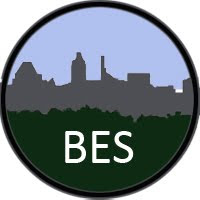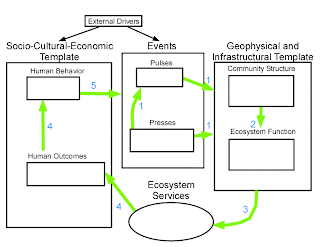BES Renewal Process
Planning for the renewal of BES will involve working meetings and white papers. A series of six meetings will be held before submission of the BES LTER renewal proposal in February 2010. Each meeting is envisioned to be a day long event. The Mid-Term Review of BES conducted in 2007 provides necessary background. The review team’s report and the NSF Program Officer’s letter are at http://www.beslter.org/internal/frame8-stuff.html (see heading “Renewal Material” and its subheading “2006 Mid-Term Site Review”).
Product – Each meeting will produce a white paper as a contribution toward the renewal proposal. The required content of the white paper is given after the descriptions of the meetings and schedule, below.
Participation – All Co-Principal Investigators, Post Docs, Graduate Students, and agency and partner Collaborators are invited and encouraged to attend the meetings.
Goals and Strategies – All meetings should:
1. Be primarily product oriented;
2. Result in a referenced white paper as input for the renewal proposal;
3. Employ a few synthetic presentations as stimulus for discussion;
4. Be designed to emphasize discussion rather than presentation;
5. Employ the LTER Network’s Integrated Science for Society and Environment feedback model template (Figure 1);
6. Seek to integrate social, and biophysical realms of research;
7. Identify and state the integrated theory motivating activities to be proposed for the renewal;
8. Articulate integrated modeling and quantitative approaches; and
9. Highlight opportunities for teaching and for educational research that emerge from the theme of each meeting.
Meeting Topics and Schedule
Individual Meetings with Agency Stakeholders. Three representatives of BES met with Baltimore City, Baltimore County, and Maryland State sustainability officers and other decision leaders in October 2008. We explored how to establish a regular communication to exchange information of mutual interest about research, projects, and policy. The insights from these meetings will be used to design an ongoing process for BES to identify shared concerns and opportunities for interaction with policy, management, and decision leaders in the Baltimore region. Leaders: Morgan Grove, Steward Pickett, and Mary Washington.
Meeting 1 — October 14, 2008:
Scoping the Renewal Process.
The BES Steering Committee, consisting of all Co-PIs and BES Collaborators met to share thoughts on the five conceptual areas to organize the renewal proposed at the 2007 meeting. The feedback loop (Figure 1) that will be an important conceptual tool for planning and organizing BES-3 was also presented. The structure and goals of the white papers, and the consideration of teaching and education research opportunities in each planning meeting were reviewed. Attendees were asked to study the Mid-Term Review report and the notes from the 2007 Steering Committee meeting concerning components of new theory for BES-3, as well as the LTER Network’s model template for Integrated Science for Society and Environment (ISSE) to prepare for the Steering Committee discussion.
Meeting 2 — January 23, 2009:
Environmental Change and Environmental Inequity.
The issues of global change is significant for Baltimore, as is the differential impact of current and future environments on different social groups. BES-3 must address climate change directly, and identify the ecosystem services that might be altered by changing climate. Measurement of those ecosystem services, and how they can alter environmental hazard and vulnerability, and consequently, environmental justice should be proposed. Explicit measures of each of these features of the urban ecosystem should be identified and justified. Leaders: Larry Band and Kirstin Dow
Meeting 3 — April 16, 2009:
Land Change Scenarios and Locational Choice Modeling.
The changing structure of urban areas is a key topic for BES-3. A task before us is to develop scenarios for land cover and land use change. The relationship of land change scenarios to models of locational choices that households and firms might make, and the social and economic drivers of those choices will be identified and specific approaches identified and justified. How policy interacts with scenarios can also be explored. Leaders: Mary Cadenasso and Elena Irwin
Meeting 4 – June 23, 2009:
New Hydro-Ecological-Social Theory.
It is crucial to articulate a new generation of integrated theory covering the various major disciplines that constitute BES. Several areas should be considered as a framework for a new statement of the theory unifying BES-3: 1) An urban stream continuum theory; 2) Controls on ecosystem flux and retention; 4) New social theoretical framework; and 4) Theoretical and conceptual approachs addressing coupling and feedbacks between social and biophysical components of the metropolitan system. The mainly biophysical theory should, in cooperation with social scientists, articulate both the expected social-economic drivers and social-economic effects of urban stream continuum and flux theory, while the mainly social theory should, in cooperation with biophysical scientists, articulate the hypothesized biophysical drivers and effects. Here is where education theory that justifies education research or pedagogical methodologies should be articulated and related to the physical-ecological-social theory that emerges. Leaders: Sujay Kaushal and Austin Troy
Meeting 5 — October 20, 2009:
Integrated Sampling Strategy
Integration across the multiple disciplines within BES can be enhanced by a clearly articulated sampling strategy that spatially and temporally relates the various social and biophysical samples. Options to be explored are the reconciliation of our current different sampling strategies, complementing the existing strategy by new spatial arrays, or articulating a sampling design essentially de novo. This meeting should produce a fully annotated map for one to several sampling strategies that take advantage of our existing data base while advancing sample integration in BES-3. How the sampling strategy can support teaching and education research should be explored. Leaders: Peter Groffman and Morgan Grove
Meeting 6 — November 17-18, 2009:
Writing Team Working Meeting
A small group will take on the task of preparing the renewal proposal based on the insights from the planning meetings. The leaders of the previous five meetings and other key BES members will convene at the Cary Institute in Millbrook, New York, in order to draft an integrated proposal for BES-3. This meeting will be a focused, intensive writing session lasting two days. Leader: Steward Pickett
BES-3 Renewal Proposal White Papers
Each of the five preparatory meetings listed above will produce a white paper. The meeting conveners will be responsible for organizing the drafting of the paper, and will involve other contributors as needed and available. The papers should satisfy the following goals: 1) State a clear theoretical motivation for work to be conducted in the third phase of BES; 2) Identify clear relationships between social and biophysical topics; and 3) Suggest the key feedbacks between social and biophysical realms to be investigated.
The components of each white paper should be as follows:
1. Title. A conceptual orientation should be emphasized. Titles for these components of BES-3 should be phrased to engage potential reviewers.
2. Research Questions. What research questions have been addressed to date in BES? Briefly, what has been learned? What new questions or outgrowths of the previous questions should be addressed in the renewal? Where do these new or extended questions fit in the LTER social-biophysical feedback loop (Figure 1)?
3. Motivations for the Questions. What explicit theoretical, methodological, and practical motivations are there for each research question suggested? What well known and cutting edge literature supports the theory, methodology, or practical concern?
4. Key Variables. What are the key variables to be measured to answer the questions? How will scenario generation and future projections be supported by the variables suggested? How can the variables from social and biophysical realms be related?
5. Sampling Plan. What sampling plan supports the suggested research questions? How does this exploit the existing BES sampling array? What future changes to the sampling regime are required? How does this sampling plan support the integration of biophysical disciplines, different social disciplines, and the relationship of biophysical and social research? Draft maps of the suggested sampling regime must be included.
6. Anticipated Findings. What outcomes are expected? What theoretical advances are likely? What methodological advances can be served? What practical contributions can be supported? How does the plan contribute to quantifying the feedbacks in the LTER social-biophysical loop (Figure 1)?
7. Illustrative Material for the draft proposal, such as figures, conceptual diagrams, tables, and brief text boxes can be used to summarize and support key points of the argument of the white paper.
8. Executive Summary. A brief (ca. 200 words) abstract or bulleted summary should be prepared to assist the writing team.
The white paper for each meeting will be due one month after the meeting.



